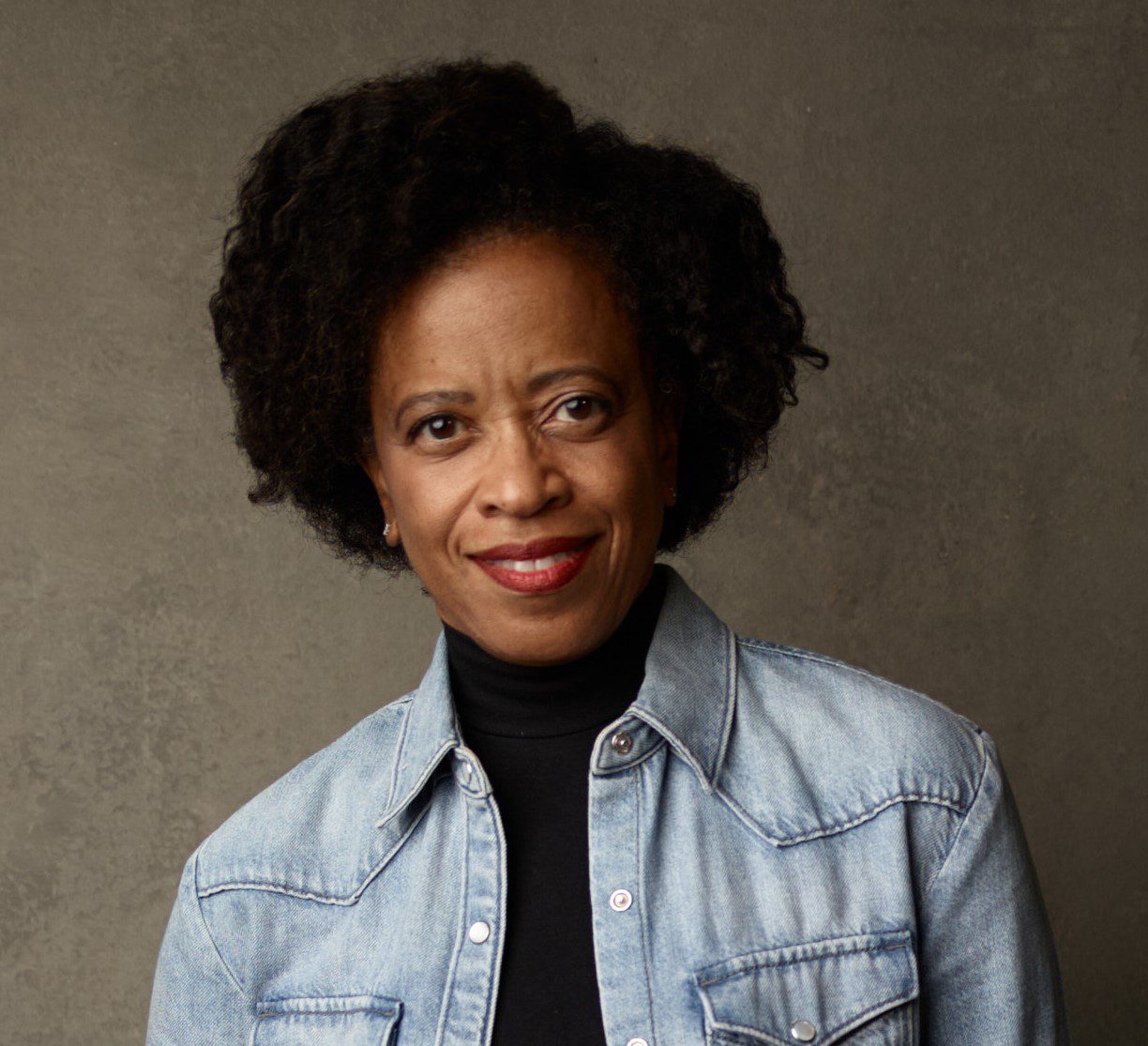Recent generations of my family have had many opportunities to practice working with difficulty. Born in a still-segregated North Carolina town, I experienced the direct disadvantages of being racialized Black in the southern United States, including a range of childhood traumas. These negative outcomes too often follow hard upon systematic impoverishment, deprivation of educational opportunities, and relegation to the caste who had made up the servile underclass since the country’s founding.
I saw that life could sometimes be consistently hard; it had been particularly so for my grandmother Nan. At the same time, I was privileged to witness first-hand how my GranNan met the challenges of her life with an ethic of responsibility and care. She opened each day with personal devotional practice, informed by the wisdom of generations in her lineage who had managed to maintain the capacity to “make a way out of no way.” The world did not much notice her success over the eight decades of her life, struggling to make ends meet and to keep the family afloat. Doors to greater opportunity never opened widely for her. But somehow she had come to know that she mattered, and found a way to keep that essential knowledge at the center of her life.
In my own life, and certainly when compared to my grandmother, I’ve been relatively fortunate. The case for greater attention to diversity, equity, and inclusion across all of our institutions has been well established over the past several decades. And while the work is ongoing, I and others have personally experienced the opening of opportunity as a result.
And identity-based polarization has been increasing across the Western world at a clip that should trouble us all.
We’ve seen these goals advanced and progress achieved through the activism, research, and teaching of anti-oppression movements, coupled with no small amount of hard work, all inspired by the legacies of the ongoing struggle for human and civil rights around the world.
And yet, you don’t have to look far to see that modern-day forms of racism, caste, xenophobia, and other kinds of categorical “othering” remain prevalent. In fact, identity-based othering—which I define as processes that have the effect of categorizing a person (or group of people) as belonging to an out-group rather than an in-group—has been found across virtually all social settings and cultures. And identity-based polarization has been increasing across the Western world at a clip that should trouble us all.
From a sociological perspective, othering can occur in distinct ways depending on cultural context, but always carries with it the threat of dehumanization. Social constructs for categorizing and ranking human beings (e.g., by race, gender, class) are ancient, and novel forms emerge at the intersections of bodies and cultures daily. In recent decades, social psychologists and cognitive scientists have helped identify the processes responsible for creating and maintaining these intersecting categories. They originate in the socially embedded mind and body, as well as the systems we create together. These categories are perpetuated through our reactions to the circumstances and contexts we find ourselves in, and particularly the sense of threat that emerges in relationship to “otherized” bodies. As a result, we create filters on the world that reflect these categories, and these become integrated into the societal systems and structures we create. These systems, in turn, play a role in conditioning the mind.
While some of what we understand as racism is familiar to us, and consistent with how it’s been expressed in our history, in many ways, what looks and feels to many like racism today is not what it was in days gone by. And given that racism intersects with other forms of identity-based suffering to cause similar harms, I sometimes prefer the broader term of “othering.” I also use “anti-othering” as a comprehensive term and focus for contemporary movements for social liberation.

The good news is this: through a multigenerational and global collection of movements and political struggles, the practices and politics of othering are being challenged. The power of othering to cause embedded structural harm in today’s world is not what it once was. But it remains. And in these times of rising existential fears—caused by climate change, global public health threats, and the threat of nuclear war—othering continues to be appealing as a justification for organizing power and rationalizing the inequitable distribution of resources.
In short, othering persists—in both old and new forms—even while changing and, in some cases and places, disappearing. And it’s reasonable to assume that when and where it benefits those in power, then personal, cultural, and systemic practices of othering are ever likely to appear and to reappear, again and again.
How Mindfulness Helps
In the first decades of research on mindfulness and its applications, the relationship between mindfulness and the reduction of bias, discrimination, and further manifestations of othering was not recognized. Indeed, my published work bringing these two fields together to support teaching and learning about race and racism, and the work of the broad community of scientists supported by the Mind & Life Institute over the past 10 years, were among the earliest to do so.
Starting in 2004, I began offering mindfulness practice to students in courses dealing with racism and American law; their enthusiastic responses told me that the effort was worthy of further pursuit. Since then, I’ve continued these offerings, and continued to learn just how they support those struggling not only to understand race and racism, but to feel a sense of liberation and healing from the wounds that othering can cause. Integrating embodied mindfulness into racial justice work helps reconnect us to ourselves, to one another, and to our power to take actions together to change systems.
The good news is that, in my view, mindfulness can assist us in upending racism, othering, and all forms of social-identity-based harms at their roots. It can assist us in becoming more aware of the underlying causes and conditions that imbue us with a sense of ourselves as racialized human beings—human beings with a racial identity that in some fundamental way distinguishes us from the other human beings who make up our family. And it can help us in the work of reflecting on the ways that our collective spaces—our schools, workplaces, communities, and broader systems—create and sustain racism, and must be re-imagined and transformed to fully upend it.
Though research on how mindfulness might affect bias and categories of Self and Other is still in its infancy, findings so far give us reason for optimism. Mindfulness has been shown to minimize bias as measured by the Implicit Association Test. And it has been shown to minimize discriminatory actions1Chang, D. F., Donald, J., Whitney, J., Miao, I. Y., & Sahdra, B. K. (2022). Does mindfulness improve intergroup bias, internalized bias, and anti-bias outcomes? A meta-analysis of the evidence and agenda for future research. [Online reprint] among those who have been shown to react in ways that indicate the presence of unconscious bias in their minds.
The good news is this: through a multigenerational and global collection of movements and political struggles, the practices and politics of othering are being challenged.
Notably, the research methods used so far have primarily focused on individual-level mindfulness practices and objectively measured effects (as has been the norm in the field). While the direction is exciting, in some ways, these efforts reveal as much about what needs to be done as they do about the success of mindfulness to lead to lasting change. There are two main reasons for this.
The first is that mindfulness, when offered as an isolated, breath-based practice for increasing focus and concentration, is not likely to create changes in how we perceive one another, act, and enact institutions. It is not intended to do so. Many of us have witnessed the inability of these practices to change deeply held views and internalized fears. They cannot, alone, transform workplaces, institutions, and broader systems. Indeed, to be more effective at doing so, mindfulness must be framed, taught, and practiced in ways that are quite different than commonly taught today (as I argue below).
The second is that the science of mindfulness must be transformed, becoming infused not only with a focus on traditionally-marginalized communities and cultures, but with a focus on collectives rather than merely on individuals. And it must continue to move beyond objective and quantitative methodologies, incorporating more subjective and qualitative methods to capture that which the numbers and other objective measures cannot.

As an example, consider a contemplative practice that I rely on regularly, and share with audiences of students, lawyers, leaders, and others. It’s called the STOP practice,2Magee, R. (2020). The S.T.O.P. Practice: Creating Space Around Automatic Responses. Mindful.org. [Online article] which is summarized in the acronym’s four elements: Stop, or pause in the midst of a reaction to a triggering event; Take a conscious breath; Observe what is happening in the body, what emotions, thoughts, and sensations may be known and acknowledged; and Proceed with presence and awareness of our power to make a positive difference.
What would it look like, then, for practices like STOP to be cultivated not only as individual-level interventions, but as practices that could be used by departments, organizations, and whole institutions? How would we invite not only individuals, but collectives, to engage in the self-examination and commitment required to unlock the transformative potential of this work? And in what ways would our research methods, teams, and reporting best be updated and improved to measure the efficacy of such innovative applications of mindfulness?
Looking to History
To mitigate against bias, we must change how mindfulness is typically taught, practiced, and understood. In some ways, what I am calling for is a more faithful and accurate reflection of the ethical frames present in the earliest forms of these practices. In other ways, I am calling for a revolution in the science of mindfulness3Such a call will be familiar to members of the Mind & Life community, within which I have been honored to issue this and related calls for change at major events over the past decade, including in live and recorded conversations in 2015, 2021, 2022; as a Keynote presenter at two Summer Research Institute conferences at the Garrison Institute (2016 and 2017); and, at the International Symposium for Contemplative Studies (San Diego, 2016). Fortunately, in the years that have followed, numerous students, teachers and research teams have responded favorably to these calls. I believe it is accurate to say, at the risk of appearing immodest, that an emerging and growing network of changes in the mindfulness teaching, training and research, to a not insignificant degree, reflect these positive responses within the broad, international Mind & Life-influenced world. and in academic measures of what counts—to broaden the inclusion of traditionally marginalized voices and perspectives in the teaching and study of these practices, and to shift our idea of the relevant unit of analysis from the individual to the collective.
I believe that mindfulness offerings—teachings and trainings in secular spaces—must be coupled with a broader set of supportive practices, akin to (but appropriately translated from) those in the original Buddhist teachings, which were intended to accompany mindfulness at its origination. Two of the most central of these are an ethical foundation, and a greater emphasis on the importance of training, practicing, and applying mindfulness in communities of practice.
To upend the root causes of racism requires that we revisit the principles and practices called “mindfulness” with a view toward not only decolonization, but grounding them in a broader set of ethical practices …
Ethically-grounded, compassion-based, embodied mindfulness has the potential not only to minimize bias as measured by computerized tests of reaction times (e.g., the Implicit Association Test), but also at larger scales. We are starting to find that we learn and grow more effectively when we are in communities of practice than when we are alone—these include our workplaces and schools. And yet, given the countervailing dynamics of individualism that pervade our institutional settings and communities, more is required to cultivate this potential. We need to pay attention to the interpersonal dynamics of trauma, and work to create and sustain trust within diverse, potentially traumatized workplaces and communities.
To address bias on a personal level, and to help others in the work of managing and minimizing the effects of bias in our systems, mindfulness must be understood, studied, practiced, taught, and researched from an ethical, socially-engaged orientation. To deepen the potential of mindfulness to minimize the pervasive threat of othering, the ethical foundation of non-harming must reclaim its historical position at the root and the center of the study, practice, and teaching of mindfulness. And this view of non-harming must include the harms associated with socially-constructed categories like race, caste, and other forms of identity.
Why I’m Optimistic
At least two things are clear to me from this first decade of work to integrate mindfulness with the objectives of diversity, equity, and inclusion.

First, help in navigating these challenges is available—both through research-based trainings, and also here and now, at every breath. In my experience, emphasizing the compassionate roots of mindfulness, centering intentions on the ethical commitment to non-harming, and offering portable practices such as the STOP practice can allow for immediate, breath- and body-based insights that can help us more skillfully navigate the challenges of a world of identity-based othering and increasing polarization.
Second, we must continue the efforts that have emerged in recent years to diversify the ranks of mindfulness teachers. But we must not stop there. To upend the root causes of racism requires that we revisit the principles and practices called “mindfulness” with a view toward not only decolonization, but grounding them in a broader set of ethical practices, including living with intentionality towards greater awareness of our interconnectedness, honesty, integrity, nonviolence, and the positive value of ethical livelihood. In traditional cultures, values and practices like these were considered essential to realizing the truly transformative potential of mindfulness. And we must infuse the practice and study of mindfulness with a focus on collective levers of change.
When I think about why I am optimistic about the potential for this work, I recall two recent conversations with students whose work and passions led them to mine.
One was with a graduate student seeking to integrate the fields of cognitive science, well-being practices, and inclusive leadership. With these interdisciplinary leanings, she had found and been inspired by my work and reached out to me for a conversation about how to frame her own research agenda. She had not considered how important it might be to view mindfulness as a support for dealing with the difficult emotions that get in the way of effective cross-group collaboration—the fear, the trepidation, the distrust. She recognized that these feelings often follow the realization of our vulnerability to systemic suffering caused by factors like climate change, Covid-19, and other risks beyond the ability of any one of us to control. She was excited to think with me about how her work might more specifically address these hindrances to transformative change. But even more moving to her was another takeaway that she received from our conversation: that mindfulness might assist people like her—first-generation children of immigrants who had been othered, and struggled to feel included—in not only better understanding themselves and stitching together disparate lineage lines, but also seeing themselves as part of a diverse human community of inherent belonging.
We are starting to find that we learn and grow more effectively when we are in communities of practice than when we are alone—these include our workplaces and schools.
Equally inspiring was the meeting I took with a 17-year old who found my work through a high school class on criminal justice. She described how uplifted she was to discover a way of approaching criminal justice work with a set of practices aimed at promoting well-being and encouraging social healing. She was determined to enter college with a commitment to doing the work of justice in a way that focused on the resources we have within to sustain us—as individuals and as changing collectives—along the way.
Similar messages I have received—from students of all races and genders and from backgrounds of privilege and disadvantage—are what most inspire and motivate me to continue this work. Here is an example from an early piece of my published writing, excerpted from a Mexican-heritage student’s reflection4Magee, R. V. (2010). Educating lawyers to meditate?. University of Missouri-Kansas City Law Review, 79, 535. on the impact of these ideas on his ability to apply lawyering skills in emotionally-intelligent, values-aligned ways:
[A]fter learning to pause and take a moment to breathe and think about my actions, I can make better decisions and learn from my mistakes, rather than letting emotion always win. I have also learned how to more fully express my emotions and not be afraid to tell someone how I feel. I learned that there are ways to bring love into the practice [of law] without being too awkward or inappropriate. I also recall the [raisin] eating meditation, which taught me the value of savoring the little things and to not forget where I came from and the goals I had in choosing to pursue a legal education.
I close with a simple yet poignant note5Author’s personal email records, email received on March 24, 2022. I received following a recent mindfulness session I offered. To me, it sums up the power of ethically- and socially-grounded mindfulness to galvanize change and healing—starting from within, but opening a vista on the potential to change what lies vastly beyond:
[J]ust listening to her confirms a lot of my beliefs, emotions, and feelings of self worth. I am enough, I do matter in this world.
This essay first appeared in Insights: Journey into the Heart of Contemplative Science and is reproduced with permission from the Mind & Life Institute.
References
- 1Chang, D. F., Donald, J., Whitney, J., Miao, I. Y., & Sahdra, B. K. (2022). Does mindfulness improve intergroup bias, internalized bias, and anti-bias outcomes? A meta-analysis of the evidence and agenda for future research. [Online reprint]
- 2Magee, R. (2020). The S.T.O.P. Practice: Creating Space Around Automatic Responses. Mindful.org. [Online article]
- 3Such a call will be familiar to members of the Mind & Life community, within which I have been honored to issue this and related calls for change at major events over the past decade, including in live and recorded conversations in 2015, 2021, 2022; as a Keynote presenter at two Summer Research Institute conferences at the Garrison Institute (2016 and 2017); and, at the International Symposium for Contemplative Studies (San Diego, 2016). Fortunately, in the years that have followed, numerous students, teachers and research teams have responded favorably to these calls. I believe it is accurate to say, at the risk of appearing immodest, that an emerging and growing network of changes in the mindfulness teaching, training and research, to a not insignificant degree, reflect these positive responses within the broad, international Mind & Life-influenced world.
- 4Magee, R. V. (2010). Educating lawyers to meditate?. University of Missouri-Kansas City Law Review, 79, 535.
- 5Author’s personal email records, email received on March 24, 2022.








